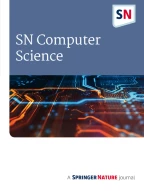Abstract
Nearly 3700 people every day die on the world’s roads in collisions with trucks, cars, buses, motorcycles, bicycles, or pedestrians.The cause of accidents is drowsiness, drunk driving, breaking the speed limit, Driver health issue and rash driving. The most concept of this venture is to avoid the street mishap so we are utilizing liquor location sensor, eye flicker sensor, over speed control sensor, temperature sensor, beat sensor. To detect drowsiness, speed of the vehicle, driver’s health, alcohol consumed by the driver, and rash driving status the model is installed with sensors in steering wheel and camera. The sensors will detect the physical condition of the driver and the camera module will take the live recording of the driver’s face part to detect the drowsiness. Simple but effective strategies are used to improve the baseline detection/tracking algorithm and the eye-state classification algorithm, and the results are tabulated to increase the system’s dependability and accuracy.
Similar content being viewed by others
Data availability
There is no datasets are used in the article. All the datas are live datas.
Change history
28 September 2023
A Correction to this paper has been published: https://doi.org/10.1007/s42979-023-02168-3
References
Piccardi M. Background subtraction techniques: a review. International conference on systems man and cybernetics 2004 IEEE, vol. 4. IEEE; 2004. p. 3099–3104.
Sawicki DS. Traffic radar handbook: a comprehensive guide to speed measuring systems. Author House; 2002.
Wilder JL, Milenkovic A, Jovanov E. Smart wireless vehicle detection system. The 40th Southeastern symposium on system theory; 2008. p. 159–163.
Malla A, Davidson P, Bones P, Green R, Jones R. Automated video-based measurement of eye closure for detecting behavioral microsleep. In: 32nd annual international conference of the IEEE, Buenos Aires, Argentina; 2010.
SSI, Ramli R, Azri MA, Aliff M, Mohammad Z. Raspberry Pi Based Driver Drowsiness Detection System Using Convolutional Neural Network (CNN). 2022 IEEE 18th international colloquium on signal processing & applications (CSPA); 2022. p. 30–34. https://doi.org/10.1109/CSPA55076.2022.9781879.
Rachakonda L, Mohanty SP, Kougianos E, Sayeed MA. Smart-steering: an iomt-device to monitor bloodalcohol concentration using physiological signals. IEEE international conference on consumer electronics (ICCE), Taiwan; 2020. https://doi.org/10.1109/ICCE46568.2020.9043045.
Tipprasert W, Charoenpong T, Chianrabutra C, Sukjamsri C. A method of driver’s eyes closure and yawning detection for drowsiness analysis by infrared camera. 2019 First international symposium on instrumentation, control, artificial intelligence, and robotics (ICA-SYMP); 2019. p. 61–64. https://doi.org/10.1109/ICA-SYMP.2019.8646001.
Phanikrishna BV, Chinara S. Time domain parameters as a feature for single-channel EEG-based drowsiness detection method. 2020 IEEE international students' conference on electrical, electronics and computer science (SCEECS); 2020. p. 1–5. https://doi.org/10.1109/SCEECS48394.2020.61.
Al Redhaei A, Albadawi Y, Mohamed S, Alnoman A. Realtime driver drowsiness detection using machine learning. 2022 Advances in science and engineering technology international conferences (ASET); 2022. p. 1–6. https://doi.org/10.1109/ASET53988.2022.9734801.
Liu S, et al. Remote drowsiness detection based on the mmWave FMCW radar. IEEE Sens J. 2022;22(15):15222–34. https://doi.org/10.1109/JSEN.2022.3186486.
Viola P, Jones M. Rapid object detection using a boosted cascade of simple features. In: Proceedings of the IEEE computer society conference on computer vision and pattern recognition; 2001.
OpenCV. Open Source Computer Vision Library Reference Manual; 2001.
Otsu N. A threshold selection method from gray-level histograms. IEEE Trans Syst Man Cybern. 1979. https://doi.org/10.1109/TSMC.1979.4310076.
ITSDa A Group, IT Forum, IRTAD road safety annual report 2015. Organisation for economic co-operation and develop; 2015.
Lavanya J, Raj RE. A mobile based novice detection of driver's fatigue level and accident reporting solution. Power Electronics and Renewable Energy Systems Proceedings of ICPERES 2014, vol. 326; 2015. p. 883–892.
L. Hanwei electronics co, MQ-3 Gas Sensor Datasheet; 2016.
Shin HS, Lee JY. Smart steering wheel system for driver's emergency situation using physiological sensors and smart phone. 2014 IEEE international symposium on innovations in intelligent systems and applications (INISTA), Italy. https://doi.org/10.1109/INISTA.2014.6873631.
Alam S, Raja P, Gulzar Y. Investigation of machine learning methods for early prediction of neurodevelopmental disorders in children. Wirel Commun Mob Comput. 2022;2022:5766386. https://doi.org/10.1155/2022/5766386.
Akshatha Y, Raja SP. Certain investigations on different mathematical models in machine learning and artificial intelligence. In: Kumar TA, Julie EG, Robinson YH, Jaisakthi SM, editors. Simulation and analysis of mathematical methods in real-time engineering applications; 2021. https://doi.org/10.1002/9781119785521.ch127.
Author information
Authors and Affiliations
Corresponding author
Additional information
Publisher's Note
Springer Nature remains neutral with regard to jurisdictional claims in published maps and institutional affiliations.
This article is part of the topical collection “Advances in Computational Approaches for Image Processing, Wireless Networks, Cloud Applications and Network Security” guest edited by P. Raviraj, Maode Ma and Roopashree H R.
Rights and permissions
Springer Nature or its licensor (e.g. a society or other partner) holds exclusive rights to this article under a publishing agreement with the author(s) or other rightsholder(s); author self-archiving of the accepted manuscript version of this article is solely governed by the terms of such publishing agreement and applicable law.
About this article
Cite this article
Pravinth Raja, S., Blessed Prince, P. & Jeno Lovesum, S.P. Smart Steering Wheel for Improving Driver’s Safety Using Internet of Things. SN COMPUT. SCI. 4, 277 (2023). https://doi.org/10.1007/s42979-022-01636-6
Received:
Accepted:
Published:
DOI: https://doi.org/10.1007/s42979-022-01636-6
